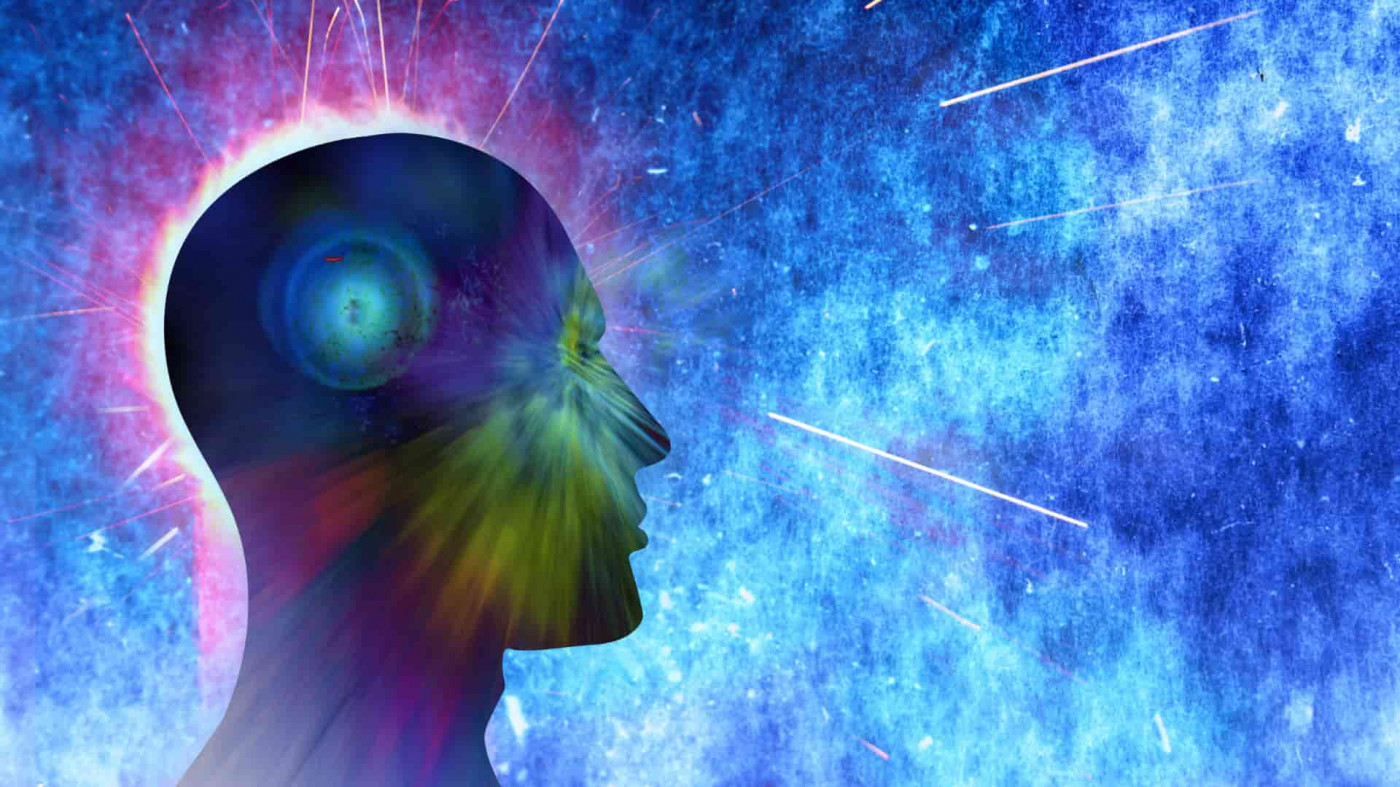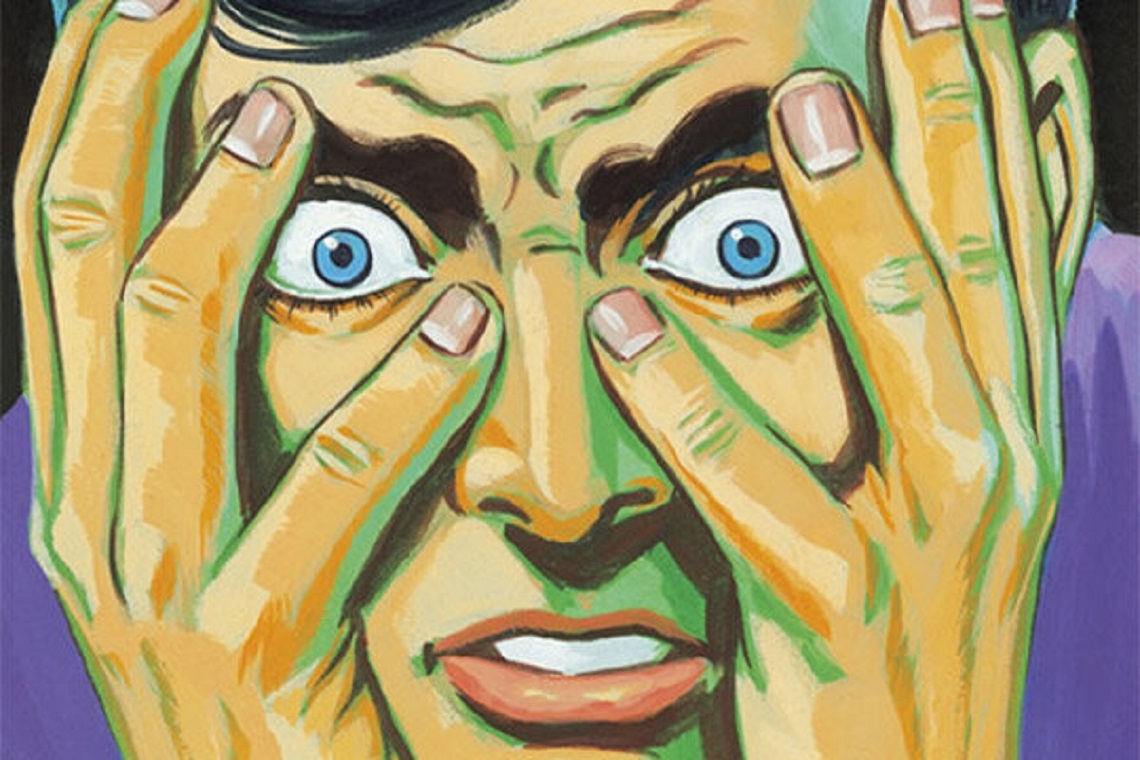Everything is movement, when it comes down to it. There’s nothing that isn’t movement, nothing else apart from movement. This is therefore the other way around to how we usually see things because we see movement as being a secondary phenomenon with regard to whatever it is that happens to be doing the moving! This is the convention adopted by our thinking. This way we get to populate the universe with what Robert Anton Wilson calls ‘spooks’ — strange mental ghosts that don’t exist in reality at all but which — in our own subjective view of the world — are the ‘main event’, are ‘what it’s all about’. For us — unquestionably — the world is all about ‘things’, things which may or may not move, but which are themselves not movement. They’re made out of something else, something ‘static’. This is how our worldview is constructed — it’s a ‘thing-based worldview’. We’re all about the things, but physics has nothing to say about any ‘things’, as Sir Arthur Eddington states here –
If today you ask a physicist what he has finally made out the æther or the electron to be, the answer will not be a description in terms of billiard balls or fly-wheels or anything concrete; he will point instead to a number of symbols and a set of mathematical equations which they satisfy. What do the symbols stand for? The mysterious reply is given that physics is indifferent to that; it has no means of probing beneath the symbolism. To understand the phenomena of the physical world it is necessary to know the equations which the symbols obey but not the nature of that which is being symbolised. …this newer outlook has modified the challenge from the material to the spiritual world.
If however, as physics asserts, there is only movement (and is nothing that is not some form of movement) then what are we doing steadfastly ignoring this truth and keeping ourselves busy relating to these fictional ‘things’ that are supposedly doing the moving? What exactly do we think these things are? What do we imagine them to consist of? With our imagination, we have actually called into existence something that not only ‘doesn’t exist’ but something which never could — under any circumstances — exist. When we put it like this it can be seen that this isn’t just ‘an odd kind of a thing’, it’s fantastically bizarre! How could we ever have the temerity to do such a thing? How could we even get the idea to go for it? And where would this idea even come from, if it doesn’t come from reality?
The answer to this question is of course that we don’t in any way see or realise that this is what we doing — we are entirely oblivious to our own outrageous temerity in this regard; it happens ‘by default’, so to speak, whilst we imagine that we are doing something quite different. So when we assume the existence of some fundamental ‘substance’ which is responsible for doing the moving (or which may also not be moving) then this isn’t an audacious supposition or theory that we are consciously putting forward but rather, it’s just the unintended consequence of us not actually looking at what we are doing, the result of what we’re doing, of our own mental laziness, in other words. To assume something without ever examining what we have assumed isn’t the same as consciously proposing it. The assumption that there is ‘something which moves’ is therefore like a shadow that comes into being as a result of the light source being obstructed, only — of course — nothing ‘comes into being’ really because a shadow is the absence of a thing, not ‘a thing in itself’. The creation of the ‘shadow world’ that is made up of our automatic assumption of ‘things’ is tremendously significant to us, as erroneous as it might be at the same time, because our fundamental orientation has been switched from ‘what is real’ (i.e. the movement) to ‘the thing which is not real’ (i.e. the assumed substance or substrate that is either moving or not moving. The consequences of this radical ‘switching of orientation’ cannot be overestimated, and we will come back to this later.
The ‘switchover’ of which we speak is only half the story however. Not only are we taking for granted the existence of a ‘substrate’ that has no basis anywhere apart from in our imaginations, we are also only paying attention to type of movement that is not movement at all. So although we can say that ‘everything is movement’ and that ‘there is nothing that is not movement’, it’s also true to say that there are two completely different types of movement, one of which isn’t genuine movement at all. The type of movement that is real is movement that leads to a new situation, a situation that hasn’t been seen before and which isn’t inherent in the starting point, whereas the other type of (so-called) movement is the type that takes us somewhere that has been seen before, somewhere that is inherent in our starting situation, something that is actually familiar and predictable to us (or at which should be if we were paying attention). If we have a number of known alternatives and we keep going from one to the other then this is the type of movement that isn’t movement — what were actually talking about here is a cycling type of movement therefore and we all know that ‘circular movement’ is movement that doesn’t actually take us anywhere. ‘Change’ that keeps bringing us back to the very same spot isn’t really change, in other words, even though it might seem to be. There is the appearance of change, or movement, but not the actuality.
The fact that there are these two types of movement, one of which is real but impossible to conceptualise (because it keeps going beyond our categories, so that these categories are constantly becoming irrelevant) and the other only ‘apparently real’ (because it never does go beyond our mental categories) opens up a rather peculiar possibility and that is a possibility of Type-II movement (or Type-II change) effectively replacing Type-I. Given the fact that, superficially speaking, circular movement feels just the same as non-circular movement, it becomes the easiest thing in the world to replace the one with the other. Just as long as we take a limited enough ‘snapshot’ of what’s going on, circular and non-circular movement appear to be exactly the same thing, and the thinking mind always does take a limited snapshot of what’s going on — it can never take a broad view because nature is such that it always has to operate within narrow limits. And not only does thought always have to ‘operate within narrow limits’ it also has to operate within narrow limits that it cannot see, that it cannot conceive of. This is its ‘necessary blindness’; this is ‘the entropy in the system’. This is the only way that thought can produce black-and-white, definite statements about the world and the whole point about thought is that it does provide black-and-white, definite statements about the world. That is its job — to do precisely this.
There is one way that we can spot the difference between Type-I and Type-II movement however: if I am travelling towards a known destination or goal, then this is Type-II movement; if my motion is directed motion (if it’s under my control) then it isn’t motion — it’s actually a state of paralysis. When I hold on tight to my goal this is a closed posture and so there can been no free movement taking place. Free movement is what happens when I let go, not what happens when I hold on. So there is change taking place and it is happening ‘all by itself’ (i.e. it’s not intended by me) then this is genuine movement, genuine change. Because the movement is happening all by itself I naturally don’t know where it’s taking me, neither does anyone else! We can say more about these two types of movements — or rather we can say what we have just said in a more succinct way. Firstly, we can say that Type-I movement is ‘willed’ and so belongs to the idea that we have of ourselves, the image that we have of ourselves as the effective doer. Type-II movement on the other hand has nothing to do with the concrete sense of identity and so this concrete ‘sense of self’ can never know it, can never ‘avail of it’. We might have heard of the Dao, and so wish wholeheartedly that we could accord with it, or harmonise with it, but the self can never accord with the Dao nor be in harmony with it. The mind-created self is always out of harmony with the Whole and it doesn’t matter how it tries to make this right! Personal will is always out of harmony with the Whole, as we could also say. Type-I movement is freedom and the Mind-Created Sense of Self can never partake in this freedom; it can never partake in this freedom because it is a function of our striving, our controlling, our manipulating — if we stop striving and controlling (as we must if we are to be free) then the MCSOS will straightaway cease to exist (since it only ever was ‘an artifact of our straining’).
If Type-I movement is freedom then Type-II movement must be the lack of freedom and this is odd because we experience our willed activity precisely as freedom. We experience our own purposeful action (when it is not being obstructed) as being ‘free will’ and so what we are saying here is that purposeful action is not free action, even though we experience it as being such. This shouldn’t perhaps come as too much of a surprise since it can plainly be seen that when we are engaged in purposeful activity we are in a state of slavery (or bondage) with regard to the goals that we have in mind. If it were the case that I was able to drop my goal or my agenda ‘at a moment’s notice’ then I clearly wouldn’t be in a state of bondage to it, but this is rarely the case. If I can’t obtain the goal which I’m aiming at then I feel bad, I feel frustrated and demoralised and I experience a knock to my self-belief; but when I do achieve it then I feel jubilant, I feel a sense of satisfaction or triumph and my self-belief is enhanced greatly. Clearly this has nothing to do with ‘freedom’; I am being motivated from outside of myself — I am stretching my neck out in the hope of being rewarded by ‘the carrot of euphoria’ and — at the same time — in fear of the kick in the pants that will surely come my way if I fail. Caught between my fear of being punished on the one hand and my yearning to be rewarded on the other, I can hardly call myself ‘free’!
What we’re talking about here is the state of attachment therefore — when I am in the state of attachment then I’m being controlled all the way. Were we to feel just as free to fail in our task as we are to succeed then this would constitute equanimity (rather than the state of attachment) but it is rare to exist in a state of equanimity — it is very uncommon to be in a state of equanimity and it is very common to find oneself in the state of attachment. Lack of freedom is the default setting; we have the persuasive illusion that our purposeful action is the same thing as freedom, so we’re not going to miss it, after all. This business of ‘trying to get things to be the way we want them to be’ is hugely engrossing anyway and so just as long as we believe that this is where our ultimate fulfilment is going to lie we’re never going to be looking anywhere else. The keener we are to obtain what we see as ‘fulfilment’ the more engrossed in the game we will be; we’re caught always looking for happiness in the wrong place, therefore. We started off by saying that ‘everything is movement’ and that ‘there is nothing that is not movement’ but we could equally well have said that ‘everything is freedom’ and that ‘there is nothing that is not freedom’. These two statements are of course identical. The ‘unfree movement’ which is purposeful action is precisely that movement which is willed or intended by ‘the Mind-Created Sense of Self’ and since there is (ultimately) no such thing as ‘lack of freedom’ we can say that purposeful action is itself unreal, an illusion, a ‘trick of the light’. But then again, the Mind-Created Sense of Self is also an illusion, so what else would we expect? This brings us to our final point — we said earlier that ‘switching over’ from being orientated towards the reality of Universal Flux to the unreality of a world that is made up of definite (and therefore unchanging) ‘things’ has tremendous consequences — the consequence being that we firmly believe ourselves to be what we aren’t, and never could be… “What’s your problem? Mistaken identity.” says Wei Wu Wei, and what greater recipe for confusion could there be than this?





